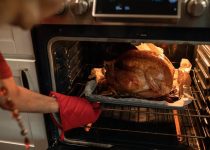How to Use a Car Rotisserie
So, you've got a classic car that needs some serious restoration work, and you're ready to tackle the job like a pro.
Using a car rotisserie is the key to getting complete access to every nook and cranny of your vehicle, making the restoration process a whole lot easier. With the right techniques, you can master the art of using a car rotisserie to its full potential.
Let's dive in and explore the step-by-step process of mounting, securing, and rotating your car for top-notch restoration work.
Get ready to elevate your car restoration game with the mastery of using a car rotisserie.
Key Takeaways
- Choose a car rotisserie that is suitable for the size and weight of your vehicle, with robust construction and high weight-bearing capacity.
- Prioritize safety features such as secure locking mechanisms and reliable support stands for a secure attachment and stable rotation.
- Position the vehicle properly, secure loose parts, and ensure balanced weight distribution for a smooth and safe rotation process.
- Utilize the car rotisserie to easily access all areas of the vehicle for tasks such as sanding, welding, painting, and repairing damaged areas.
Choosing the Right Car Rotisserie
When you're considering purchasing a car rotisserie, it's important to understand the specific requirements of your vehicle restoration project. There are different types of rotisseries available, such as adjustable height, fixed height, and hydraulic rotisseries. The type you choose should align with the size and weight of your vehicle, as well as the scope of the restoration work. For smaller or lighter vehicles, an adjustable height rotisserie might be suitable, while larger or heavier vehicles may require a hydraulic rotisserie for better weight distribution and stability during rotation.
Equipment recommendations for using a car rotisserie include ensuring that the construction is robust and durable, with high weight-bearing capacity. Look for features such as secure locking mechanisms, adjustable arms, and ease of rotation to facilitate the restoration process. Additionally, consider the space available in your workshop or garage for the installation and operation of the rotisserie. Prioritize safety features, such as sturdy locking pins and reliable support stands to prevent accidents during the restoration process.
Selecting the right car rotisserie is crucial to ensure the safety of the vehicle and the efficiency of the restoration process. Consider the specific needs of your vehicle and the available space to make an informed decision.
Preparing the Vehicle for Rotation
Before rotating the vehicle, you'll need to position it properly to ensure a smooth process.
Additionally, it's crucial to take safety measures to prepare the vehicle for rotation, such as securing loose parts and ensuring stability.
Following these steps will help you get the vehicle ready for the upcoming rotation on the car rotisserie.
Vehicle Positioning for Rotation
Positioning the vehicle securely on the car rotisserie is crucial for a successful rotation. Follow these steps to ensure proper vehicle stability and rotisserie operation:
- Secure Attachment: Double-check that the vehicle is securely attached to the rotisserie to prevent any accidents during rotation.
- Balanced Weight Distribution: Ensure the weight of the vehicle is evenly distributed on the rotisserie to maintain stability and prevent tilting.
- Clearance: Verify that there's enough clearance around the vehicle to allow for a smooth rotation without any obstructions.
- Locking Mechanism: Engage the locking mechanism of the rotisserie to keep the vehicle in place and prevent any unnecessary movement during the rotation process.
Safety Measures for Preparation
To ensure the vehicle is properly prepared for rotation on the car rotisserie, you need to carefully assess and address any potential safety risks.
Start by ensuring that the car is securely positioned on the rotisserie to prevent any shifting or movement during rotation. Double-check the placement of safety equipment such as wheel chocks and safety stands to provide additional support and prevent accidents.
Additionally, make sure that the emergency procedures, including the location of the emergency brake and the accessibility of fire extinguishers, are clearly understood and readily available.
Inspect the vehicle for any loose or protruding parts, and remove or secure them to prevent interference with the rotation process.
Mounting the Car Onto the Rotisserie
Attach the car to the rotisserie by securing the mounting brackets to the vehicle's frame. This is a crucial step in the process of using a car rotisserie as it ensures that the vehicle is securely held in place during the rotation.
Follow these steps to properly mount the car onto the rotisserie:
- Position the mounting brackets: Place the mounting brackets at the designated points on the vehicle's frame, ensuring that they're aligned properly for a secure attachment.
- Secure the brackets: Use the appropriate hardware to securely fasten the mounting brackets to the vehicle's frame. Double-check to ensure that they're tightly secured to prevent any movement during rotation.
- Adjust the height and angle: Once the mounting brackets are in place, adjust the height and angle of the rotisserie to ensure that the vehicle is properly balanced and positioned for rotation.
- Test for stability: Before proceeding with the rotation, carefully test the stability of the mounted vehicle to ensure that it's securely attached to the rotisserie and ready for operation.
Securing the Vehicle in Position
Securing the vehicle in position on the rotisserie involves several steps to ensure safe rotation and stability.
First, check the tightness of the mounting brackets. Verify that they are securely fastened to the vehicle's frame. It is important to use a torque wrench to tighten the bolts to the manufacturer's specifications. This step is crucial for maintaining vehicle stability during rotation.
Once the mounting brackets are secure, it is essential to check the balance of the vehicle. Ensure that the weight is evenly distributed and that the vehicle is properly aligned on the rotisserie. This step is critical for maintaining stability during the rotation process.
When positioning the vehicle on the rotisserie, make sure that the frame is level and the suspension isn't under tension. This is important as it can affect the rotisserie alignment.
Taking these precautions will provide a secure and stable foundation for the vehicle, allowing for safe and effective rotation.
Utilizing the Rotisserie for Restoration Work
When restoring a car's underbody, the rotisserie allows you to easily access all areas for sanding, welding, and painting. By rotating the car, you can work on the underside without straining your back or contorting into uncomfortable positions.
The rotisserie's ability to tilt and lock into various positions makes restoration work more efficient and less physically demanding.
Restoring Car's Underbody
Restoring your car's underbody using a car rotisserie involves carefully inspecting and repairing any rust or damage. Here's how to effectively restore your car's underbody:
- Inspection: Utilize the rotisserie to rotate the car, allowing you to thoroughly inspect the underbody for rust, corrosion, and damage.
- Rust Removal: Use appropriate tools to remove any rust from the underbody, ensuring a clean surface for restoration work.
- Repair Work: With the car on the rotisserie, easily access and repair any damaged areas, such as floor pans or frame rails, using welding and fabrication techniques.
- Rust Prevention: Apply rust inhibitors and protective coatings to the underbody, safeguarding it against future corrosion.
Rotating for Easy Access
To rotate the car for easy access when utilizing a car rotisserie, carefully position the vehicle to ensure a secure and balanced setup, allowing for efficient restoration work. When implementing the rotating technique, make sure to use the rotisserie's features to tilt the vehicle to the desired angle, providing access advantages to the underside and other areas needing attention.
This allows you to work on different sections without the need to constantly reposition the car. By rotating the vehicle, you can easily reach all parts of the undercarriage, making tasks such as welding, painting, and rust treatment more accessible. Additionally, the rotating feature enables you to inspect and work on various components from different angles, ensuring thorough restoration and quality craftsmanship.
Mastering the rotating technique will significantly streamline your restoration process and enhance the overall efficiency of using a car rotisserie.
Rotating the Vehicle for Access
To rotate the vehicle for access, position the car rotisserie according to the manufacturer's instructions. Ensure that the vehicle is securely mounted to the rotisserie, and the weight is evenly distributed. Once in position, you can rotate the vehicle using the rotisserie's built-in mechanism or by manually turning it, depending on the model.
To facilitate the rotation process, consider the following tips:
- Balance the vehicle: Ensure the vehicle is evenly balanced on the rotisserie to prevent any unwanted shifting or instability during rotation.
- Secure the vehicle: Double-check that all the mounting points are securely fastened to prevent any accidental movement or slippage.
- Clear the workspace: Remove any obstacles or obstructions around the rotating area to allow for a smooth and unobstructed rotation.
- Consider safety precautions: Wear appropriate safety gear, such as gloves and goggles, and have a helper nearby to assist with the rotation if needed.
Safety Measures and Best Practices
When using a car rotisserie, prioritize safety by carefully following the manufacturer's guidelines for secure mounting and even weight distribution of the vehicle. Regular equipment maintenance is crucial to ensure that the rotisserie functions properly and can bear the weight of the vehicle.
Before use, inspect all components for signs of wear and tear, and address any issues promptly. Proper assembly and operation are essential for a safe and successful vehicle rotation. Double-check that all bolts, pins, and locks are securely in place before mounting the car onto the rotisserie.
During operation, be mindful of the weight distribution and make adjustments as necessary to maintain balance. Always adhere to the recommended weight capacity of the rotisserie to avoid accidents. Additionally, it's important to use appropriate safety gear, such as gloves and goggles, when handling the equipment.
Following these safety measures and best practices will help ensure a secure and efficient vehicle rotation, minimizing the risk of accidents or damage to the vehicle and the rotisserie.
Frequently Asked Questions
Can a Car Rotisserie Be Used for All Types of Vehicles, Including Trucks and Suvs?
Yes, a car rotisserie can be used for trucks and SUVs, but it's essential to choose the right one with adequate weight capacity. Ensure the rotisserie you select can support the specific weight of your vehicle.
Is It Necessary to Remove the Engine and Transmission Before Mounting the Car Onto the Rotisserie?
Before mounting your car onto the rotisserie, it's essential to remove the engine and transmission. This ensures proper balance and safety during the rotation process. Be sure to follow manufacturer guidelines for your specific vehicle.
What Are the Recommended Tools and Equipment for Securing the Vehicle in Position on the Rotisserie?
To secure your vehicle on the rotisserie, you'll need sturdy chains, ratchet straps, and braces. Ensure the securing tools are in good condition and properly rated for the weight. Position equipment carefully for safe rotisserie use.
Are There Specific Safety Precautions to Take When Rotating a Vehicle for Access to Different Areas During the Restoration Process?
When rotating a vehicle on a car rotisserie, always secure the vehicle properly before initiating the rotating process. Be mindful of the vehicle weight and follow the recommended mounting process to ensure safety precautions are met.
Can a Car Rotisserie Be Used for Painting and Finishing Work on the Vehicle?
Yes, you can use a car rotisserie for painting and finishing work on the vehicle during the restoration process. Ensure safety precautions are taken, and the vehicle is secured properly before beginning any maintenance or painting.




